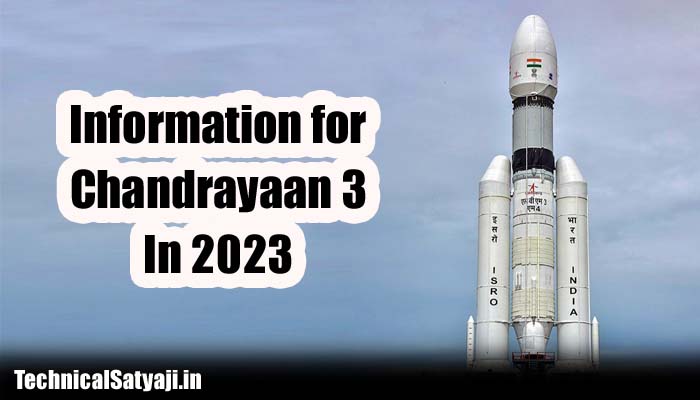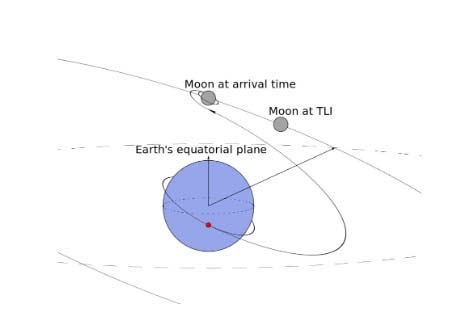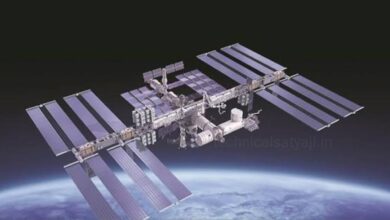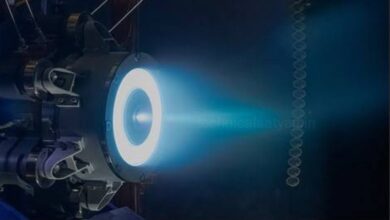Live Status, Position, Map, Location Tracker, and Success/Failure Information for Chandrayaan 3

India would join a small group of just three other countries that have successfully completed a soft landing on the Moon if the Chandrayaan 3 mission is carried out by the Indian Space Research Organisation (ISRO)—the United States, the erstwhile Soviet Union, and most recently, China. Both the US and the USSR experienced numerous spacecraft mishaps prior to a successful Moon landing. As the only country to succeed in its initial effort, China stands out with the Chang’e-3 mission from 2013.
Chandrayaan 3 faces a number of challenging challenges, including earthbound maneuvers, entry into the lunar orbit, lander separation, a series of deboost maneuvers, and a power descent phase for a safe landing. P Veeramuthuvel, the project director for the Chandrayaan-3 spacecraft, revealed this information.
Chandrayaan 3 Live Updates and Location:
23 August – The powered descent, the next important step in this project, is scheduled to begin on August 23, 2023, at about 1745 IST.
Watch Here:
August 20: Chandrayaan-3 performed the second and final deboosting operation, which caused the LM orbit to be shrunk to 25 km by 134 km.
on August 19th, 2023: The Lander Module is in an orbit around the moon that is 113 km by 157 km in size. On August 20, 2023, a second de-boosting is scheduled.
19 August 2023 – Vikram Lander’s image of Earth with the Moon in the distance.
Chandrayaan-3 Mission:
View from the Lander Imager (LI) Camera-1
on August 17, 2023
just after the separation of the Lander Module from the Propulsion Module #Chandrayaan_3 #Ch3 pic.twitter.com/abPIyEn1Ad— ISRO (@isro) August 18, 2023
18th of August: The ‘deboosting’ technique, which lowered the spacecraft’s orbit from 157 km to 113 km, was successfully carried out. In order to slow down and enter an orbit where the Perilune, or point closest to the Moon, is 30 km away from the Apolune, or the farthest point, which is 100 km away, one must first decelerate.
Astonishing lunar video is captured by the Vikram lander.
The Lander Position Detection Camera of Chandrayaan-3 captured a brief video of the Moon on August 15, 2023, and it has been made public by ISRO.
MOON 🌖 as captured by the Lander Position Detection Camera (LPDC) on August 15, 2023#Chandrayaan3 #ISRO pic.twitter.com/6fNUIQaIAD
— LVM3-M4/CHANDRAYAAN-3 MISSION (@chandrayaan_3) August 18, 2023
August 17 – According to ISRO, Chandrayaan’s Vikram Lander Module has successfully been separated from its Propulsion Module. The Vikram will start its climb towards the moon tomorrow at 4:00 PM.
Chandrayaan-3 Mission:
‘Thanks for the ride, mate! 👋’
said the Lander Module (LM).LM is successfully separated from the Propulsion Module (PM)
LM is set to descend to a slightly lower orbit upon a deboosting planned for tomorrow around 1600 Hrs., IST.
Now, 🇮🇳 has3⃣ 🛰️🛰️🛰️… pic.twitter.com/rJKkPSr6Ct
— ISRO (@isro) August 17, 2023
August 16 – Chandrayaan-3 was successfully launched into the 153 by 163 km orbit that was intended for it, thanks to a precisely timed ignition that took very little time to complete. The steps taken to get to the moon have finally been finished. The Lander Module and the Propulsion Module are currently being prepared for their specific trajectories, which is the focus. On August 17, 2023, the Lander Module will be strategically separated from the Propulsion Module as part of the next phase.
Chandrayaan-3 Mission:
Orbit circularisation phase commencesPrecise maneuvre performed today has achieved a near-circular orbit of 150 km x 177 km
The next operation is planned for August 16, 2023, around 0830 Hrs. IST pic.twitter.com/LlU6oCcOOb
— ISRO (@isro) August 14, 2023
August 14 – Currently, Chandrayaan is just a few hundred kilometers away from the moon. Now that the orbit has officially started to circularize. Today, a meticulously planned maneuver resulted in the successful establishment of a 150 by 177 km nearly circular orbit. The subsequent procedure is scheduled for August 16, 2023, at approximately 0830 IST.
Chandrayaan-3 Mission:
Even closer to the moon’s surface.Chandrayaan-3's orbit is reduced to 174 km x 1437 km following a manuevre performed today.
The next operation is scheduled for August 14, 2023, between 11:30 and 12:30 Hrs. IST pic.twitter.com/Nx7IXApU44
— ISRO (@isro) August 9, 2023
10th August – ISRO has released the Earth image and the moon image that were both taken on July 14 by the Lander Image camera.
Chandrayaan-3 Mission:
🌎 viewed by
Lander Imager (LI) Camera
on the day of the launch
&
🌖 imaged by
Lander Horizontal Velocity Camera (LHVC)
a day after the Lunar Orbit InsertionLI & LHV cameras are developed by SAC & LEOS, respectively https://t.co/tKlKjieQJS… pic.twitter.com/6QISmdsdRS
— ISRO (@isro) August 10, 2023
8th August – Chairman of ISRO Dr. S. Somnath boldly states in a lecture with an NGO called Disha Bharat that the Chandrayaan-3 mission will be successful even if the sensors or the engine fail. If the propulsion system is powerful, Vikram will still land safely even if all other systems malfunction, including the sensors.
6th August – The spacecraft successfully completed a planned orbit lowering maneuver by firing its engines backward. As a result, it has grown nearer to the Moon’s surface with an orbit range of 170 km by 4313 km. Another operation to decrease its orbit will be performed on August 9, 2023, between 13:00 and 14:00 Hrs. IST. The process will now move on to this phase.
Chandrayaan-3 Mission:
The spacecraft successfully underwent a planned orbit reduction maneuver. The retrofiring of engines brought it closer to the Moon's surface, now to 170 km x 4313 km.The next operation to further reduce the orbit is scheduled for August 9, 2023, between… pic.twitter.com/e17kql5p4c
— ISRO (@isro) August 6, 2023
5th August – Smoothly entering the lunar orbit, Chandrayaan-3 achieved the desired orbital parameters of 164 by 18074 kilometers. A skillful maneuver was conducted at the Perilune under the supervision of the Mission Operations Complex (MOX) at ISTRAC, Bengaluru. The next task is orbit reduction, a vital phase of the mission strategy. Around 23:00 Indian Standard Time (IST) on August 6, 2023, is when this incident is supposed to happen.
Chandrayaan-3 Mission:
“MOX, ISTRAC, this is Chandrayaan-3. I am feeling lunar gravity 🌖”
🙂Chandrayaan-3 has been successfully inserted into the lunar orbit.
A retro-burning at the Perilune was commanded from the Mission Operations Complex (MOX), ISTRAC, Bengaluru.
The next… pic.twitter.com/6T5acwiEGb
— ISRO (@isro) August 5, 2023
4th August – Chandrayaan-3 travels almost two-thirds of the distance to the moon. Lunar Orbit Injection will take place on August 5, 2023, about 19:00 IST.
Chandrayaan-3 Mission:
The spacecraft has covered about two-thirds of the distance to the moon.Lunar Orbit Injection (LOI) set for Aug 5, 2023, around 19:00 Hrs. IST. pic.twitter.com/MhIOE65w3V
— ISRO (@isro) August 4, 2023
1st August – Chandrayaan-3 will begin its journey to the Moon after completing its Earth orbits. A dramatic perigee-firing at ISTRAC, ISRO, successfully guided the spacecraft into its translunar orbit. As Earth gets closer to the lunar vicinity, the much awaited Lunar-Orbit Insertion (LOI), which is scheduled for August 5, 2023, will take place.
Chandrayaan-3 Mission:
Chandrayaan-3 completes its orbits around the Earth and heads towards the Moon.A successful perigee-firing performed at ISTRAC, ISRO has injected the spacecraft into the translunar orbit.
Next stop: the Moon 🌖
As it arrives at the moon, the… pic.twitter.com/myofWitqdi
— ISRO (@isro) July 31, 2023
26th July – It is scheduled to perform the TransLunar Injection (TLI) on August 1, 2023, between 00:00 and 1:00 IST. The anticipated TLI launch will mark the beginning of the spacecraft’s lunar mission.
25 July – Chandrayaan-3 successfully completed its fifth and final orbit-raising mission to get the spacecraft closer to the Earth on July 25 between 2:00 and 3:30 IST. Once it arrives at its destination, the spacecraft is expected to enter an orbit that is 127,609 km by 236 km in size. The achieved orbit will be verified on the basis of subsequent measurements. The maneuver was done using the ISRO Telemetry, Tracking and Command Network (ISTRAC).
Chandrayaan-3 Mission:
The orbit-raising maneuver (Earth-bound perigee firing) is performed successfully from ISTRAC/ISRO, Bengaluru.
The spacecraft is expected to attain an orbit of 127609 km x 236 km. The achieved orbit will be confirmed after the observations.
The next… pic.twitter.com/LYb4XBMaU3
— ISRO (@isro) July 25, 2023
20 July – According to the (ISRO), the Chandrayaan 3 finished its fourth orbit-raising manoeuvre on Thursday, July 20 between 2:00 and 3:30 PM IST. The spacecraft must perform a number of orbit-raising maneuvers before entering a lunar orbit, and this is the fourth of them.
Chandrayaan-3 Mission:
🇮🇳 India celebrates #InternationalMoonDay 2023 by propelling Chandrayaan-3 🛰️ a step closer to the Moon 🌖The fourth orbit-raising maneuver (Earth-bound perigee firing) is performed successfully from ISTRAC/ISRO, Bengaluru.
The next firing is planned for… pic.twitter.com/XeuD5c06v1
— ISRO (@isro) July 20, 2023
18 July – The spacecraft completed its intended orbit, which was 51400 km by 228 km.
Chandrayaan-3 Mission:
The spacecraft has attained a 51400 km x 228 km orbit, as planned.— ISRO (@isro) July 18, 2023
14 July – On Tuesday, July 18, between 2:00 and 3:30 PM IST, the third orbit-raising manoeuvre was successfully completed, and ISRO formally acknowledged this. The spacecraft is now orbiting the Earth at a distance of 228 kilometers from its furthest point and 51,400 kilometers from its center. The following fire event is planned for Thursday, July 20, between 2 and 3 IST.
Video of Chandrayaan 3
The lunar maneuver was successfully finished by ISRO on Sunday after Chandrayaan-3 was successfully placed into an elliptical lunar orbit the day before. This process significantly reduced the spacecraft’s height at apolune, which stands for its closest approach to the moon, from 18,074 km to 4,313 km.
Chandrayaan 3 Position
As of July 25, ISRO verified Chandrayaan’s modified orbital parameters. The spacecraft will be situated in its most recent orbit, which will be between 233 and 71,351 kilometers from Earth’s surface at its furthest point.
Chandrayaan 3 Status
The detailed briefings from ISRO scientists include important details on the rover’s intended Moon landing. The vehicle will, as expected, be positioned close to the Moon’s uncharted South Pole, where it will conduct investigations into water, ice, and minerals. Given that the South Pole is still a hugely understudied region with a lot of scientific promise, India stands to benefit tremendously from this.
The Indian Space Research Organization (ISRO) plans to release comprehensive analyses along with the results of the successful Moon landing on July 14 or later. The details of the expedition, including analytical data, will be made available to the public, enabling everyone to take part in this incredible scientific undertaking.
Trans Lunar Injection: What is it?
Rockets or spacecraft must perform the Trans Lunar Injection (TLI) maneuver in order to leave Earth’s orbit and travel to the Moon. As soon as the launch vehicle reaches low Earth orbit (LEO), it is often carried out. It is an essential part of lunar missions. The spaceship needs the proper velocity and trajectory in order to exit the gravitational field of Earth and change to a trajectory that will intercept the Moon. Trans Lunar Injection is utilized to provide the spacecraft these parameters. To enter a trans-lunar trajectory, TLI fundamentally requires boosting the spacecraft’s speed and energy.

During a Trans Lunar Injection, the spacecraft’s propulsion system is ignited at a precise location and with the appropriate amount of thrust to generate the desired trajectory. The timing and accuracy of this burn are crucial because the spacecraft could miss the Moon or fail to enter a stable lunar orbit if it doesn’t attain the correct velocity or angle. After the Trans Lunar Injection fire, the spacecraft starts on a course that will lead it to the Moon. To refine the route and ensure a successful lunar landing, additional trajectory changes and burns may be necessary along the way.
Humbly Request To All Visitors!
If you found above both downloading link expired or broken then please must inform admin by fill this Contact Us! Form




